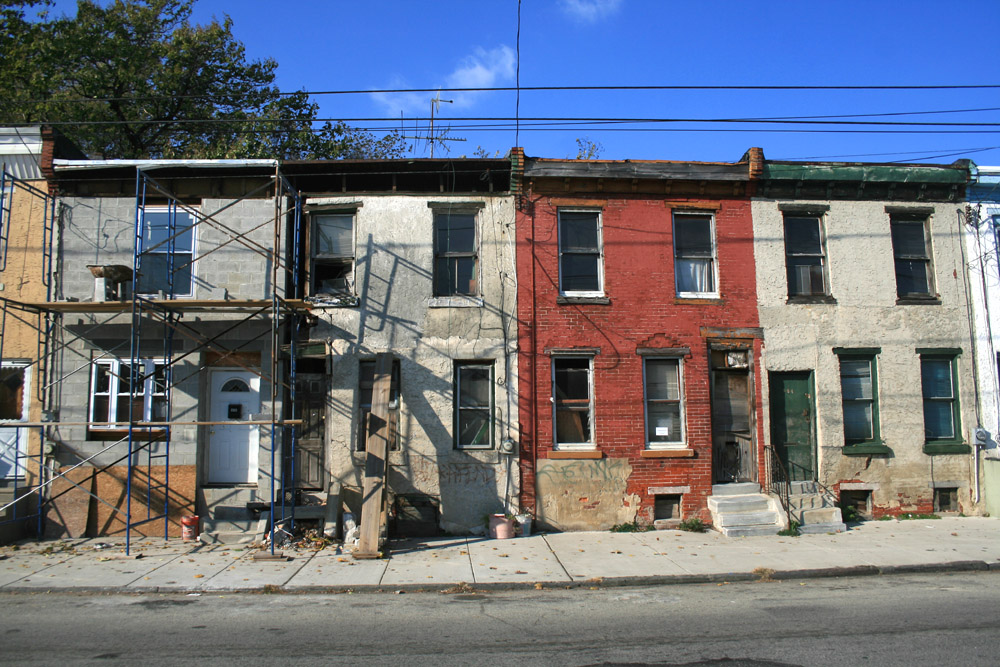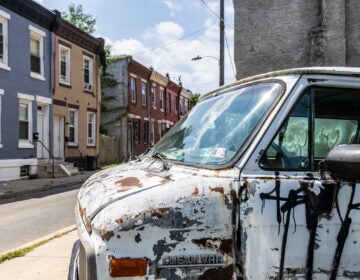Healthy Rowhouse Project wants to help repair 5,000 homes per year

A local group called the Healthy Rowhouse Project announced on Wednesday that it has collected nearly $1 million in grants that it plans to dedicate to protecting Philadelphia’s most important assets: its hundreds of thousands of rowhomes.
Next year, the group plans to hire an executive director and embark on a major research initiative aimed at finding the best, most efficient ways to repair rowhomes. The group is concerned with rowhomes for a number of reasons. Rowhouses make up more than two thirds of the buildings in Philadelphia, and three quarters of them are more than 50 years old.
Old rowhouses provide stable housing for low-income residents, who sometimes pass them down through the generations. But when they fall out of shape, the cost of repairs can quickly become too expensive for owners. Dilapidated homes can cause or exacerbate health problems for their residents, and when maintenance issues compound, they can lead to vacancy.
Additionally, keeping rowhouses in good shape can stabilize communities in low-income neighborhoods.
“Philadelphia has one of the most amazing affordable-housing stocks anywhere in the country,” said Karen Black, who co-founded the Healthy Rowhouse Project. “It was built to last. It was built for the workforce.”
The project grew out of the Design Advocacy Group last year, but Karen Black said she’s been thinking about the issue for about ten years. Affordable-housing construction is necessary, she said, but because it’s so costly and so rare, it tends to operate like a lottery. The cost of building a new affordable house dwarfs the cost of repairing an existing one, even though repairs can have the same impact as construction. Simple repairs can prevent residents from getting sick and moving out, and that can prevent neighborhoods from being completely turned over to a new population through gentrification. In other places, housing abandonment can be a blighting influence on otherwise healthy neighborhoods.
“We’re talking about roughly $10,000 in repairs per home, but the benefits of maintaining these homes are extraordinary,” said architect Kiki Bolender, a co-founder of the project, in a press release.* “Families are able to stay in homes they have had for generations, the culture of our neighborhoods remains strong, and residents miss fewer days of work and school.”
The Healthy Rowhouse Project won’t be competing for housing-repair funding with groups that actually do the work. It’ll be focused on finding ways to help groups like Habitat for Humanity, Rebuilding Together, and others to scale up operations. One of its goals in the first year is to identify financing to perform 5,000 rowhouse repairs in a year.
“There are government and non-profit partners providing home repairs in Philadelphia, but the need so outstrips the demand that wait lists are four or more years long, and thousands of Philadelphians are forced to live in substandard housing,” Black said in a press release. “Healthy Rowhouse is devoted to the idea of using creative financing to extend home repair help to thousands more Philadelphians each year.”
*Disclosure: Kiki Bolender sits on PlanPhilly’s Advisory Board.
WHYY is your source for fact-based, in-depth journalism and information. As a nonprofit organization, we rely on financial support from readers like you. Please give today.





